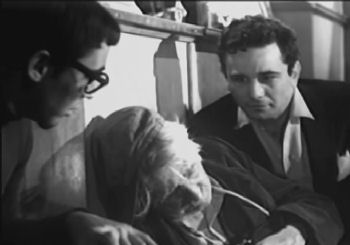Starring: Peter Falk, Jack Betts, Barbara Lord, Robert Christie, and Ron Hartmann
Director: Julian Roffmann
Steve's Rating: Seven of Ten Stars
A small-time hood and drug dealer (Falk) becomes enamoured with the beatnik lifestyle and with nihilism. He concocts the murder of a messenger boy, as a sort of performance art piece to show how meaningless life and death are. However, he didn't count on the boy's brother (Betts) who is willing to go to any length to find the killer.
"The Bloody Brood" is a lowkey crime drama set against the backdrop of beatnik clubs and parties. It's a rare film in that it doesn't paint the counter-culture as inherently corrupt and evil, but instead shows outsiders coming in and ruining it, such as Falk's gangster character Niko, and his spineless partner-in-murder, Francis (Hartmann). Instead, the film shows the true beatniks to be into harmless "kicks", and as young people who feel alienated from society, such as Ellie Brook (Lord).
The star of this film is, in every way, Peter Falk. He plays his character with a sense of quiet menace that commands the attention of the viewers. It's easy to see how Niko manages to become the center of the beatnik group--it's not just his money, his access to party-pads, or his ability to spin pop-culture nihilistic philosophical discussions out of the tiniest of logic threads... it's his charisma. And Falk shows a charisma in this role as I've never seen him display in any other role. (And it's not that he is the only good actor in the film--everyone in the cast maes a good account of themselves.)
The film is also well photographed, taking full advantage of the black-and-white medium, as well as the beatnik settings. I found it interesting how the only soundtrack present was whatever music might be playing at a club or a party, but that this music still underscored the drama tremendously.


























.jpg)
